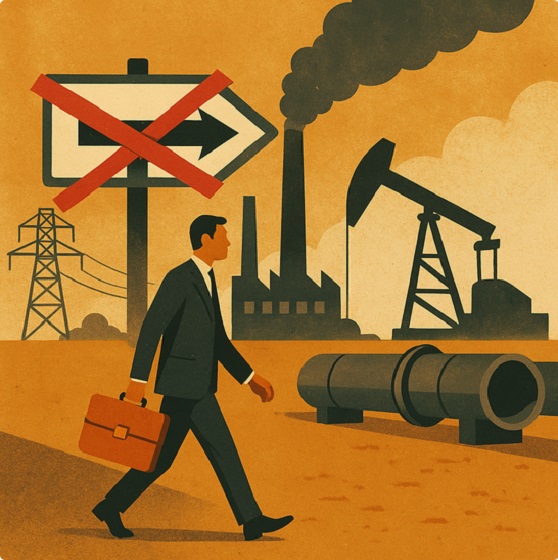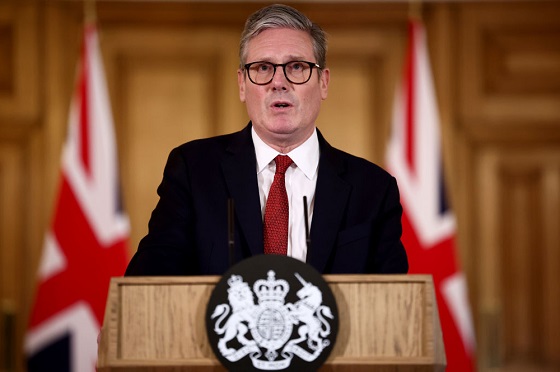National
NDP seemingly learns nothing from electoral collapse as the party sets identity goals for leadership race

From LifeSiteNews
The NDP’s collapse is no mystery: the party abandoned workers for identity quotas and woke virtue-signaling that Canadians overwhelmingly rejected.
In the April 2025 federal election, the New Democratic Party was nearly wiped from the Canadian electoral map. The NDP was reduced to seven parliamentary seats, five short of the 12 needed to gain official party status. NDP leader Jagmeet Singh, one of the worst politicians in recent memory, lost his own seat. The once-proud standard-bearer of Canadian Leftism was reduced to a mere 6 percent of the popular vote.
An autopsy of the NDP reveals any number of comorbidities. Justin Trudeau flanked them by pivoting hard to the Left under the Liberal banner. Singh desperately licked Trudeau’s boots and propped up his minority government for months, likely in a bid to pass the minimum threshold necessary to get his parliamentary pension. The Conservatives – to their own electoral detriment – relentlessly hammered Singh’s NDP, reducing vote-splitting on the Left.
But even interim NDP leader Don Davies admitted recently that his party’s obsession with woke identity politics has been an electoral millstone around the party’s figurative neck. In a recent podcast interview with TVO host Steve Paikin, Davies mused that the party’s priorities have drifted in recent years.
“I think what the NDP has to do is a really good navel-gazing,” he told Paikin. “Are we talking about the right issues that are affecting kitchen tables in Oshawa or Trois-Rivières or Kamloops? Are we really understanding what working people are going through? I’m looking forward to the discussion in our party to see if we can reorient ourselves so we can tell workers, ‘We get you; we’ve got policies that will make your lives better.’”
Of course, this is precisely what the activists who run the NDP do not wish to do. As the National Post noted, Davies “said he also recognizes that, at the same time, issues facing white, straight male workers are ‘not the same’ as issues facing a worker who is a lesbian and a woman of colour and the party should find a balance between reflecting those different interests.” The NDP once claimed to be the party of the working man, but there aren’t a lot of construction workers or oil riggers flocking to the party’s banner.
As it turns out, the NDP has learned nothing. Just days after Davies’ navel-gazing conversation with Paikin, the party announced the requirements for the upcoming leadership race to select Jagmeet Singh’s replacement. Candidates must collect 500 signatures from party members, with at least 50 from each of the country’s five regions – the Atlantic, Quebec, Ontario, the West, and the territories. But there’s more:
Rules indicate that at least 50 per cent of the total required signatures must be from NDP members who do not identify as a cisgender man – meaning a male whose reported gender corresponds to their reported sex at birth. The party also requires a minimum of 100 signatures be from “equity-seeking groups” such as racialized members, Indigenous members, members of the LGBTQ+ community and persons living with disabilities.
As the Post noted with magnificent understatement: “The party did not immediately respond when asked how officials would reasonably verify if members identified as cisgender men or as being part of ‘equity-seeking groups.’”
Indeed, how could they? With LGBT groups recognizing a minimum of 72 genders, what is to stop some aspiring leftist from adopting any number of identities? In Latin America, male political candidates – with straight faces and internal chortles – have adopted LGBT identities in order to qualify for just such quotas. Very few of these identities are actually known to the average Canadian, and virtually none of them are independently verifiable. They are, after all, about internal feelings – and these feelings are both unquestionable and sacred.
Don Davies, in other words, recognizes that without the “straight white working man” that the NDP once relied on, the party is doomed. A few days later, his party released requirements for new aspiring leaders mandating that at least half of the signups cannot be straight white males. They didn’t quite word it like that, but their intentions could not be more clearly conveyed – or more clearly heard.
After a series of debates that I am very much looking forward to, the NDP will vote for the new leader in March 2026 via ranked ballot. Currently, Edmonton MP Heather McPherson and leftist activists Yves Engler and Avi Lewis are expected to run.
Economy
Fracking a win-win for workers and the environment in New Brunswick

From the Fraser Institute
By Alex Whalen
Wayne Long, MP for Saint John-Kennebecasis, waded into the long-standing debate on natural gas development in New Brunswick recently, bluntly telling Brunswick News “we need to frack.” Fracking refers to hydraulic fracturing, a process used to recover underground natural gas deposits. Long is right, and it’s important that New Brunswickers understand the economic opportunity inherent in natural gas, while separating fact from fiction when it comes to risks.
Estimates of New Brunswick’s Frederick Brook shale formation, a large underground deposit stretching from roughly Hampton to Sackville, suggest the province sits on approximately 80 trillion cubic feet of recoverable natural gas. At current market prices, the total value of this resource, if fully recovered, ranges from $186 billion to $221 billion. To be sure, such estimates are inherently uncertain and would materialize over a long period of time. However, even the province’s own estimates project $21 billion in investment with a “moderate” level of gas development.
Economic opportunities of this scale are rare and badly needed in New Brunswick. According to a recent comparison of employment earnings, New Brunswickers had the second-lowest median earnings ($32,175) among residents of all 10 Canadian provinces and 50 U.S. states. According to data published by Statistics Canada, wages in oil and gas are the highest among 22 categories of industry in Canada, topping $125,000 per year.
While a modest level of gas development has occurred in New Brunswick around the Sussex area, this resource is largely untapped. One of the main reasons is the moratorium on fracking implemented by the Gallant government in 2014. This ban is not supported by the facts.
In a wide-ranging review of scientific literature published by the Fraser Institute last year, my colleague Kenneth Green found that fracking does indeed carry risks, but these risks are manageable. For example, air pollution and water contamination are important factors that must be closely monitored when fracking is in place. Yet jurisdictions across North America safely recover natural gas while managing these risks. In the process, they grow their economies and boost the incomes of workers.
Moreover, development of natural gas carries environmental benefits, since the emissions produced by the consumption of natural gas are much lower than dirtier fuels such as coal. Another recent study found that if Canada were to double its natural gas production and export the additional supply to Asia as liquified natural gas (LNG) to displace emission-intensive coal in power generation, global emissions could be reduced by up to 630 million tonnes annually . For context, this reduction would be the equivalent of 89 per cent of Canada’s total greenhouse gas emissions.
As New Brunswick’s natural gas opportunity comes back into focus, the facts are clear: the province has an enormous economic opportunity to join the growing number of jurisdictions developing their natural gas resources. Fracking represents a win-win for both workers and the environment in New Brunswick.
Business
Canada’s economy teeming with troubling stats

From the Fraser Institute
It’s striking that Canada has around 100,000 fewer entrepreneurs than two decades ago, even though the population has increased dramatically over that time.
Earlier this week, we marked another Labour Day, and Canada’s job market is losing steam. The slowdown is occurring against the backdrop of unprecedented tariff hikes, persistent geopolitical tensions, and a stagnant Canadian economy. Nationally, employment fell by 40,000 between June and July, with the job losses concentrated in fulltime private-sector positions. Total employment in July was scarcely higher than it was in January (measured on a seasonally adjusted basis). Manufacturing and construction are among the industries that have posted sizable job declines so far in 2025.
The picture is less gloomy on a year-over-year basis. Employment in Canada rose by 1.5 per cent from July 2024 to July 2025. But the month-to-month pace of job creation has been decelerating. Meanwhile, the unemployment rate has been ticking higher. In July, Canada-wide unemployment stood at 6.9 per cent, up from 5.7 per cent 18 months ago. Job vacancy rates have also been falling. Young adults are bearing much of the burden of Canada’s slumping labour market. Oddly, even amid a recession-bound economy, the federal government inexplicably continues to admit large numbers of temporary foreign workers.
Digging deeper into the data—and going back further to the pre-COVID years—yields insight into the dynamics of Canadian job creation. Looking at the period from January 2019 to July 2025 (roughly six-and-a-half years), we can track the trends in three broad employment categories: private-sector payroll jobs, public-sector jobs and the self-employed.
Since the start of 2019, public-sector jobs are up by almost one-quarter, while private-sector payroll positions have increased by 10 per cent. Meanwhile, the number of self-employed Canadians declined over the same period, suggesting a deterioration of the climate for entrepreneurship in the country. That’s troubling.
Entrepreneurs and startup businesses are the lifeblood of a dynamic market economy. Indeed, economists recognize that a key marker of a thriving economy is a healthy rate of business formation. New businesses are an important source of innovation and fresh ideas. They also help to inject competitive vigour into both local markets and the wider economy—something that’s clearly necessary in Canada, given years of subdued business growth and the cartelization of large swathes of our economy. Accelerating business formation should be a top priority for governments at all levels. Supporting the commercial success of existing young firms is also crucial, given the outsized contributions they make to the overall economic growth process.
For entrepreneurs and others who invest in startup companies, the risk of failure is ever present. Many new businesses don’t survive. In the goods-producing sector of the Canadian economy, about 70 per cent of new businesses survive for at least five years; in the broad services-producing sector, the rate is lower (56 per cent). Ten-year survival rates are around 50 per cent in goods-producing industries and just 35 per cent in service-based industries. Becoming a businessowner/operator is not for the faint of heart.
Canada urgently needs more high-growth businesses. This means building a robust pipeline of new entrepreneurial ventures.
Unfortunately, we have been falling short in this area, with the rate of business startups diminishing. It’s striking that Canada has around 100,000 fewer entrepreneurs than two decades ago, even though the population has increased dramatically over that time.
Canadian policymakers would be wise to ask themselves why entrepreneurship is faltering. Governments should act to modify their tax, regulatory and industrial policies to establish an economic environment that’s more conducive to entrepreneurial wealth-creation and the growth of small and medium-sized businesses.
-

 Daily Caller2 days ago
Daily Caller2 days agoU.S. Blows Narco Vessel Out Of The Water In Southern Caribbean
-

 Censorship Industrial Complex1 day ago
Censorship Industrial Complex1 day agoCanadian gov’t claims privacy provision in online censorship bill was “accidentally” removed
-

 Education2 days ago
Education2 days ago1-in-3 Canadian university students fear formal consequences for expressing honest viewpoints in class
-

 Frontier Centre for Public Policy2 days ago
Frontier Centre for Public Policy2 days agoFreedom Takes A Back Seat To Bureaucratic Convenience
-

 Business2 days ago
Business2 days agoCanada Is Sleepwalking Into A Cartel-Driven Security Crisis
-

 Crime2 days ago
Crime2 days agoChina-to-Mexico drug route shattered in record seizure of drug precursor chemicals
-

 Business2 days ago
Business2 days agoCanada Is Suffocating Its Future One Policy At A Time
-

 Crime2 days ago
Crime2 days agoRep. Luna suggests Epstein’s sex trafficking operation was ‘a lot bigger’ than expected








